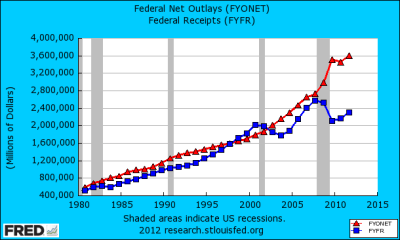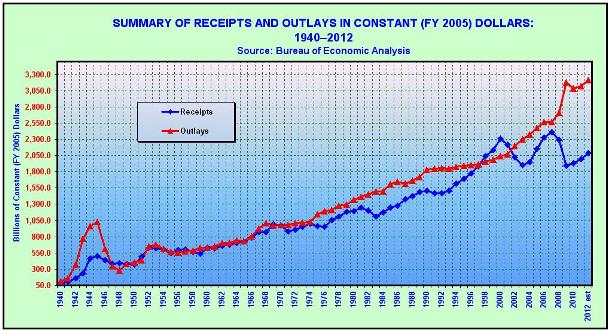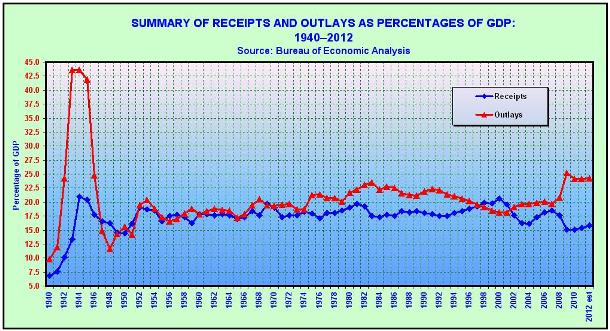:: Use It or Lose It: We Can’t Wait
– By: Larry Walker, Jr. –
According to unelected hoodlums within the Obama Administration, from 2003 to 2006, Congress set aside $473 million in earmark transportation funds that have never been spent. “These idle earmarks have sat on the shelf as our infrastructure continued to age and construction workers stood on the sideline,” Transportation Secretary Ray LaHood said in a conference call Friday. “I’m taking that unspent money and giving it right back to the states so they can put it to work on the infrastructure projects that they need most — projects that will put people to work.”
So according to Mr. LaHood he’s going to take (i.e. steal) $473 million that was earmarked for infrastructure projects from 2003 through 2006, and send it right back (i.e. 6 to 9 years after the fact) to the states so they can spend it on the infrastructure projects they need the most (i.e. for purposes other than Congress intended). Aside from the fact that this proposal is felonious, the money Mr. LaHood is referring to no longer exists.
The idea of taking funds earmarked towards specific projects, which were deemed unworthy of pursuit during a previous administration, and shifting them towards other purposes today is felonious. What does the term “earmarked funds” mean? It means if Congress passes legislation to repair a certain bridge, the money to repair that bridge is “set aside”. But following Mr. LaHood’s gangster logic, ‘fictitious’ funds earmarked towards certain projects, six to nine years ago, may now be used to fund projects such as California’s Bullet Train to Nowhere. Perhaps a pair of handcuffs is in order.
Common sense dictates that if a bridge still needs fixing, and if the funds still exist and are not barred by the statute of limitations, then it should be fixed. But if the bridge doesn’t need fixing, if it was subsequently replaced by another project, or if the statute of limitations has expired, then the funds, assuming they still exist, should be returned to the Treasury. The notion of “use it or lose it” in this matter is felonious. According to Mr. LaHood, States now have around 45 days, or until October 1st, to identify projects for which they plan to use the money, or else they will lose it. In other words, the funds were not lost after sitting idle for 6, 7, 8 and 9 years, but suddenly there is an arbitrary 45-day deadline. Who passed that law? What is the statute of limitations for spending on earmarked transportation projects – 9, 8, 7, or 6 years? Is there one, or do bureaucrats just get to make up the rules as they go along?
Where’s the Money?
The following analysis from John A. Swinford on his blog, People, Places, News and Other Stuff, answers a key question: Where’s the money?
“Sounds reasonable, right? Hold on to your horses; remember this is a politician speaking. According to Transportation Secretary Ray LaHood, “These idle earmarks have sat on a shelf…” Well, OK, they were authorized but not used. I get that, but what happened to the funding for those earmarks…where is the money…in a lock box or a savings account…or somewhere else? Secretary Hood claims the earmarks were authorized during a period between 2003 and 2006 but not actually spent and therefore, the cash is still available.”
“Before you buy that explanation consider the difference between a budget and cash accounting. If you go to the St. Louis Federal Reserve Bank website you can pull up the actual Federal cash receipts and outlays. In each of the years to which Secretary Hood refers, the cash deficits ran $378 billion, $413 billion, $318 billion and $248 billion respectively (in current dollars). OMG, Washington spent more cash than it took in…What a surprise… But if that is so how could there possibly be some extra loose cash sitting around. Answer… there is none. The only way to fund “Use It or Lose It” is what? You guessed it…more borrowing.”
In fact, according to the Bureau of Economic Analysis, in real terms, the federal government operated at deficits of -1,955.2 billion from 2003 to 2008, and another -4,678.1 billion from 2009 to 2012 (shown in Constant FY 2005 Dollars). So not only was there nothing leftover, the money was never there to begin with.
The annual deficits shown in the chart above and listed below are shown in billions of constant (FY 2005) dollars. Note that the federal budget was nearly balanced in FY 2007.
- 2003 -402.6
- 2004 -427.9
- 2005 -318.3
- 2006 -239.7
- 2007 -151.0
- 2008 -415.7
- 2009 -1,274.4
- 2010 -1,153.0
- 2011 -1,127.6
- 2012 -1,123.1 (estimate)
The chart below summarizes receipts and outlays as percentages of Gross Domestic Product. Notice how the budget gap has widened dramatically since 2009.
Obama’s ideas on the economy are nothing more than classic Loot-and-Plunder, trickle-up, middle-out snake oil. In other words, borrow now – pay never. It didn’t work during the Great Depression, it hasn’t worked since 2009, it has never worked and it never will. Proposing to implement 1/16th of President Clinton’s 1990’s tax policies, while ignoring the fact that back then, income tax rates were higher on every American across-the-board, isn’t a serious plan for either growing the economy or balancing the budget. It’s a notion that most certainly fails to justify the felonious borrowing conjured up by Transportation Secretary LaHood just yesterday.
It’s time to return to supply-side economics which proved itself during the Roaring 20’s, the 1960’s, the 1980’s, the 1990’s and most of the 2000’s (through 2007). Obama has no plan to pay down the $5.3 trillion (in current dollars) which he’s added to the national debt, let alone the $16 trillion overall balance. Yet he seems to have no problem borrowing another $500 million under the guise that it’s somehow Bush’s fault. That’s right! Expect the extra $500 million in borrowing to magically be credited to George W. Bush, while Obama continues to promote the obvious lie that spending hasn’t increased on his watch.
But as each of the above charts show, whether in terms of current dollars, constant (FY 2005) dollars, or as percentages of GDP, Obama has allowed spending to skyrocket while revenues have continued to suffer due to a weak economy and high unemployment, symptoms of his failed economic policies. It’s time to put an end to this churlish presidency. Borrow It or Save It? We can wait – all the way to November 6th.
“The debt and the deficit is just getting out of control, and the administration is still pumping through billions upon trillions of new spending. That does not grow the economy.” ~ Paul Ryan
Addendum:
During 2008 the Highway Trust Fund required support of $8 billion from general revenue funds to cover a shortage in the fund. This shortage was due to lower gas consumption as a result of the recession and higher gas prices. Further transfers of $7 billion and $19.5 billion were made in 2009 and 2010 respectively.
^ Weiss, Eric M. (September 6, 2008). “Highway Trust Fund Is Nearly Out of Gas“. The Washington Post. Retrieved May 4, 2010.
^ “President Signs Bill Providing 9-Month Extension, $19.5 Billion for Highway Trust Fund“. The Washington Post. March 19, 1010. Retrieved August 15, 2011.
———————————————
References:
THE OLD WASHINGTON SHELL GAME? | John A. Swinford
Trickle Up Economics | Peter Schiff
Chart Data: Spreadsheet | Google Drive



Great post Larry. Maybe that Transportation slush fund is held in the same location as the Social Security Trust Fund. aka fantasy land.
http://www.uschamber.com/issues/retirementpension/socialsecurity/trust-fund-myth
LikeLike
These funds come straight out of the Highway Trust fund, separate from the General Fund. It is funded through federal gas tax. I don't have to remind you that the US infrastructure consistently gets a 'D' grade from the ASCE. This move does away with useless political earmarks and gives the money back to the states and locals, a move we all can agree is good. There is plenty wrong with this administration, but this ain't one of them.
LikeLike
That's a bunch of BS. During 2008 the Highway Trust Fund required support of $8 billion from general revenue funds to cover a shortage in the fund. This shortage was due to lower gas consumption as a result of the recession and higher gas prices. Further transfers of $7 billion and $19.5 billion were made in 2009 and 2010 respectively.
^ Weiss, Eric M. (September 6, 2008). “Highway Trust Fund Is Nearly Out of Gas“. The Washington Post. Retrieved May 4, 2010.
^ “President Signs Bill Providing 9-Month Extension, $19.5 Billion for Highway Trust Fund“. The Washington Post. March 19, 1010. Retrieved August 15, 2011.
LikeLike
I'll agree that the current 18.4 cents can't sustain our current infrastructure, hence the GF transfers. Another interesting note, these earmarks were never voted on. They are contained in the conference reports which accompany the bills. Also, the earmarks are really just down payments, rarely covering all the costs needed for construction. Earmarks are gone and that's a good thing. Now the money is put back in the hands of the state DOTs and local Metropolitan Planning Organizations. I will put my faith in these organizations rather than politicians who have been bought by special interests.
LikeLike
Never voted on? Go figure! Wherever the referenced earmarks came from, that money no longer exists (it really never did). But even if it did exist 6 to 9 years ago, it wasn't used so it's already been lost.
LikeLike